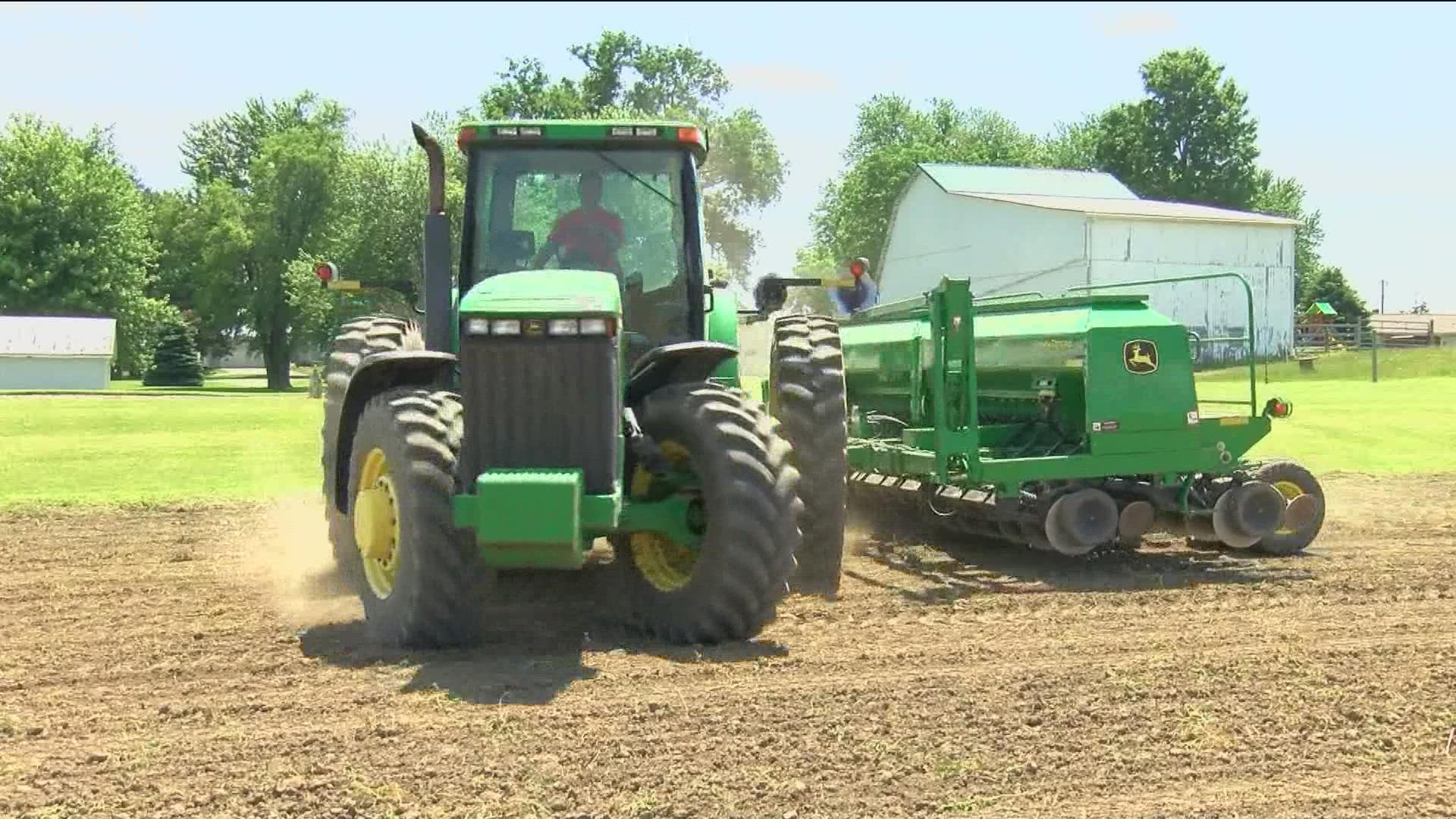FULTON COUNTY, OHIO, Ohio — Farmers are ready for planting season. But Mother Nature... not so much.
"Every year is different. 2019 was a disaster with a cold wet spring. A lot of fields sat empty as it was almost too late to plant corn and beans," Bill Buckenmeyer said. "This spring? Cool and wet. But it’s still early."
Buckenmeyer's a third-generation farmer. His farms grow corn, soybeans and wheat over 4,000 acres in Lucas and Fulton counties, plus Lenawee and Hillsdale counties across the state line.
“Past few years it seems like we haven’t been able to get in there as early as we used to be, I don’t know, due to the weather we are getting a lot of rain now and it’s held us back the last few years," Buckenmeyer said.
Nathan Baker is out of Waldron. His Border View Farms covers Lucas, Williams and Hillsdale counties.
Like Buckenmeyer Farms, he’s ready to go.
Just waiting on Mother Nature.
"We start planting last week of April so we are right in that window right now," Nathan Baker said. "I wouldn’t say we are behind schedule yet but it’s a little cold in the spring and the weather will change at any point."
Inflation’s been a hot topic for everyone. That’s affecting agriculture. Farming is normally high risk, high reward but this year more so. Prices for fuel, seed and chemicals have gone up 300% in some cases.
“Anhydrous is our main source of nitrogen for corn," Buckenmeyer said. "Last year we were paying $500. Now we are $16-to-1,700."
"We are spending a lot more dollars per acre to plant that crop," Baker said. "And if we have poor weather this summer - a drought, a flood, whatever; a 2019 spring where we just can’t get the crops in - we have a lot more to lose.”
The war in Ukraine has made things worse, too. Ukraine is one of the biggest grain producers in the world and they feed much of Europe.
Crops from the USA and other countries will be needed to make up for that.

